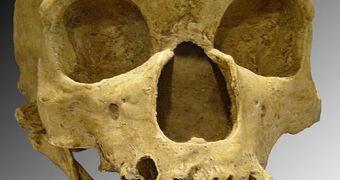The results of a new genetic analysis show that people living outside of Africa all carry genetic materials from Neanderthals, the species of hominids Homo sapiens had to compete with in order to ensure dominance all over the world.
This fight raged between 40,000 and 30,000 years ago, although no one can say for sure how long the two species lived together. Given that our ancestors left Africa, everyone else they encountered after doing so was most likely a Neanderthal.
The new study demonstrated that a part of the human X chromosome originates in our Neanderthal competitors. No traces of these materials were ever found in people native to the Old Continent.
The international team of researchers that conducted the new investigation was led by University of Montreal Department of Pediatrics expert Damian Labuda. He also holds an appointment with the CHU Sainte-Justine Research Center.
Details of the research effort appear in a paper published in the July issue of renowned scientific journal Molecular Biology and Evolution, Science Blog reports. “This confirms recent findings suggesting that the two populations interbred,” Dr. Labuda says.
This type of interaction most likely took place in the Middle East, where the two species are likely to have met for the first time. Neanderthals were already there, their ancestors having left Africa during a past migration wave, between 400,000 and 800,000 years ago.
Primarily, our competitors evolved in the land that is now part of the Russian Federation, Germany, Spain and France. From each of these locations, they were driven extinct by a complex interplay of factors, including our own species, climate change, volcanic eruptions and so on.
For many years, experts have been wondering whether Neanderthals could truly interbreed with humans. Until recently, this matter has been under debate, with the scales tipping in favor of those arguing against this idea.
However, the new work puts the matter to rest once and for all. “In addition, because our methods were totally independent of Neanderthal material, we can also conclude that previous results were not influenced by contaminating artifacts,” Dr. Labuda says.
The relations that our species had with the Neanderthals may have also contributed to our own adaptation to the land that was left vacant by our competitors' disappearance, the research team says.
“Variability is very important for long-term survival of a species. Every addition to the genome can be enriching,” Dr. Labuda concludes, quoted by Science Blog.

 14 DAY TRIAL //
14 DAY TRIAL //